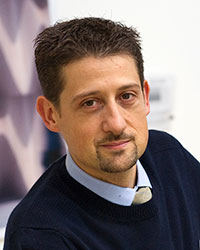非常抱歉,
你要访问的页面不存在,
非常抱歉,
你要访问的页面不存在,
非常抱歉,
你要访问的页面不存在,
验证码:

职称:professor
所属学校:Massachusetts Institute of Technology
所属院系:Nuclear Science and Engineering
所属专业:Nuclear Engineering
联系方式:617-253-4231
PhD, Nuclear Engineering, Tokyo Institute of Technology, 2004. M.S., Nuclear Engineering, University of Pisa, 2002.
Turbulence Modeling The availability of more robust and physically realistic turbulence models will bring immediate and major improvements to the reactor's economic and safety performance. The unique generality of the approaches that we are developing allows designing new configurations and innovative concepts, accurately reproducing complex flow and heat transfer distributions; these improvements directly translate into higher efficiency and reduced failures. Unsteady flow phenomena Unsteady flows are often encountered in nuclear applications and can strongly affect the efficiency and reliability of components. Understanding of the underlying physical mechanism and development of groundbreaking modeling techniques is a focus of our research. Multiphase flow and boiling Computational multi-phase flow techniques are being developed to provide a faithful representation of the complex boiling and two-phase flow regimes. Applications include the use of interface tracking techniques to develop cross-flow correlations for subchannel analysis codes and use of the Euler-Euler approach to represent the boiling phenomena in PWR and BWR cores. These methods have demonstrated great potential, and pioneering work is ongoing to bring them up to develop reliable design tools. Virtual Reactor Modeling Development of innovative computational approaches is being incorporated with the ability of implementing full scale detailed models of reactor designs. These high quality, large scale models will incorporate validated multiphysics in order to predict complex multileveled interactions in the early stage of the design. Such innovative tool will significantly modify the project approach for advanced solutions and innovative concepts.